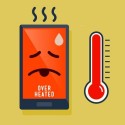In 2012, Kevin Na, a successful US professional golfer, was leading the final round of a prestigious golf tournament in the United States when his form suddenly deserted him. He slumped to a score of 74 and ended up in 7th place.
This story may not have been particularly unusual were it not for the visible signs of what was happening to his golf swing. He appeared to have great difficulty taking the club away from the ball in order to complete his backswing.
Instead of a smooth rhythmic golf swing honed by thousands of hours of practice, at one stage he took the club back from the ball 6 times, repeatedly waggling it in the process, before being able to strike it.
Whatever mental processes were going on in his head can’t have been helped by some of the spectators who, observing his predicament, shouted: “Hit it!” “Pull the trigger!”
Na was later quoted as saying that the average golfer/golf fan has no idea how much pressure professional golf professionals are playing under and how tough the mental part of the game could be.
Fortunately more recently Na has reported that he is now “90% in control” of the problem.
Many of us can relate to this story in that despite our best intentions and particularly when trying to avoid making a mistake, under pressure we do it anyway.
What makes us error prone or regress to less useful ‘fixed’ habitual behaviors?
Daniel Wegner[1], a psychologist in Harvard University, calls these ‘ironic errors’. They occur as a result of monitoring processes involving the Anterior Cingulate and dorsolateral part of the Prefrontal Cortex (PFC). One of the functions of the Anterior Cingulate, a major component of the ‘hot’ Limbic System, is to anticipate which negative outcome(s) may occur in a given situation.
The likelihood of these errors occurring increases with mental ‘loading’ whether due to stress, difficulty focusing on what we are trying to do because of competing distractions, or time pressures. When we are “trying (too) hard” or “really want to succeed”, the hot system can start to impair even the most practiced skills.
Ironic errors not only affect motor skills such as those experienced by Na. They can affect attention and memory, prompt recurrent unwanted thoughts or memories, increase attraction to forbidden desires and lead to rebounds of negative experiences such as anxiety, pain and depression.
How do we learn to balance the role of thinking and doing?
In experiments carried out by Danielle Bassett and his colleagues in the US[2], where participants were scanned whilst learning a simple game requiring sensory (mostly visual) and motor skills, too much thinking seemed to impair the speed taken to master the skill.
Using a whole-brain imaging technique to identify ‘blocks’ of interconnected brain, they showed that those participants who had the least amount of neural activity, particularly in the frontal and Anterior Cingulate cognitive control areas, learnt to master the skills faster.
They concluded that although cognitive control areas are important for learning complex tasks, as the learning progresses, overthinking or trying too hard may actually get in the way.
Intuition can be helpful.
Intuition or ‘gut reactions’ also depend on automatic Basal Ganglia activity which may be impaired by over thinking. In a series of experiments, Keiji Tanaka[3], who scanned both professional and then amateur Shogi players, showed that the faster and more adept the players were or became, the more likely the Caudate Nucleus in the Basal Ganglia seemed to be responsible for their rapid ‘unconscious’ responses.
Shogi is a Japanese strategy game which has been likened to a more complex version of chess. Professionals spend a lifetime learning their skills. When tasked with finding a solution to a checkmate-like situation within one second, professional players were found to have activated an area within the Caudate nucleus. On the other hand when given more time to deliberately come up with a solution this area was less active.
Amateurs who trained over a 15 week period also showed that as their skills increased there was an associated increase in their Caudate activity.
Striking a balance between delicious and vicious cycle activity.
It seems to be a question of balance between the functions of the ‘delicious’ and ‘vicious’ cycles. When there is a healthy balance between prefrontal cortical and subcortical areas optimum performance is more likely. The delicious cycle helps us to control behaviour, thoughts and emotions and allows us to experience an effortless ‘flow’ situation.
Contrast this with the ‘vicious cycle’, where under conditions of psychological stress, the Amygdala activates ‘stress pathways’ leading to high levels of noradrenaline and dopamine which impair PFC function and further strengthen Amygdala function. Manifestations may include impairment of memory, attention and self-control.
Thus the ‘bottom up’ control of brain functions switches on rapid emotional and habitual behavioural responses rather than those produced by the slower more thoughtful and flexible ‘top down’ PFC.
How do we learn how to switch on the ‘delicious cycle’, avoid ironic errors and calm the vicious cycle?
We will be answering this question in the next series of articles devoted to ‘mapping the brain circuits’ in order to understand how different areas of the brain work together and how we can learn to control them to our advantage.
We are particularly interested in the connections between the PFC, Basal Ganglia, Midbrain and Limbic system and their relationship to learning new habits, and more importantly how we can change them.
The first section describes The Pre Frontal Cortex (PFC): deliberate, knowing and cool, providing top-down control including brakes!
[1] Daniel M Wegner in Science 3rd July 2009. Vol 325 48-50. 10.1126/science.1167346
[2] Danielle S Bassett et al Nature Neuroscience, 2015; doi:10.1038/nn.3993
[3] www.jneurosci.org/content/32/48/17492.long


I really liked your article.Really thank you! Awesome. Guidry